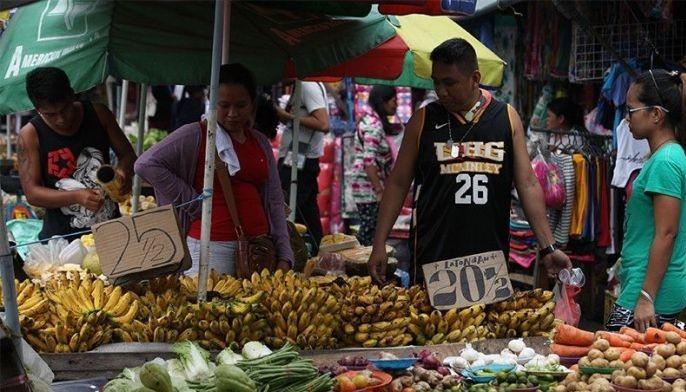BSP official says 7% growth ‘very doable’ in 2019

MANILA, Philippines — The Philippine economy can expand by 7 percent next year, as inflation — which policymakers had called a growth “spoiler” — will no longer be a big headache by that time, a central bank official said.
Stubbornly high inflation and surging borrowing costs have already weighed on consumer spending, which has traditionally been the driving force behind growth in the Philippines, and crimped economic expansion to a three-year low of 6.1 percent in the third quarter.
In an ABS-CBN News report on Thursday, Bangko Sentral ng Pilipinas Deputy Governor Diwa Guinigundo said a 7 percent growth in 2019 is “very doable,” as soaring prices are projected to ease next year once the more than two-decade-old caps on rice imports are lifted.
Sustained infrastructure spending is also expected to provide some support for the economy, he added.
"The challenge is to have it (Rice Tariffication Bill) signed as soon as possible because the next step is to prepare the implementing rules and regulations," Guinigundo was quoted as saying.
The central bank is pinning a lot of its hopes for declining inflation on the rice tariffication scheme. Under the measure, individuals and businesses can import additional volumes of the crop but will have to pay a 35-percent tariff. Proceeds will be used to fund mass irrigation, warehousing and rice research.
Filipino households reeling from high prices since the beginning of the year finally got their much-awaited reprieve in November, which saw a four-month low inflation rate of 6 percent on the back of slower price increments for food and tumbling oil prices.
In the first 11 months, rising prices averaged 5.2 percent, still above the BSP’s 2-4 percent annual inflation target range set until 2020.
After delivering back-to-back hikes, the BSP in December kept key rate unchanged. This was the first time in six meetings that the central bank held policy settings steady since it jacked up benchmark rates by a cumulative 175 basis points over the last seven months.
Monetary authorities also cut their inflation forecasts, with surging prices now seen averaging 5.2 percent this year from 5.3 percent, 3.18 percent in 2019 from 3.5 percent, and 3.04 percent in 2020 from 3.3 percent.
The Philippine government targets to spur economic growth to 6.5-6.9 percent this year and to 7-8 percent in 2019 until 2022. — Ian Nicolas Cigaral
- Latest
- Trending






























